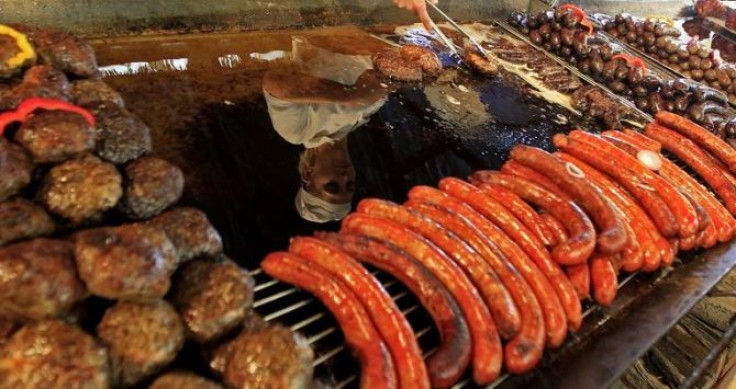Antibiotics in Meat May Do More Harm Than Good

Antibiotics added in sausages kill bacteria that ferment meat and actually help disease-causing bacteria like Salmonella grow, according to a new study.
According to researchers from University of Copenhagen, Denmark, and University College Cork, Ireland, the levels of antibiotics used in meats in the United States and European Union are so high that it kills all the bacteria that would have otherwise made the meat acidic and didn't allow the pathogens to grow. Instead, now pathogens can flourish because the use of antibiotics lowers the acidity in the meat.
Antibiotics are used to treat cattle and these antibiotics end up in the final product as well. Researchers wanted to know if the levels of antibiotics in the meat, as set by U.S regulators, could affect the process of making sausages and pepperoni.
Researchers conducted a small experiment to test the role of antibiotics in the fermentation of meat. They used antibiotics oxytetracycline or erythromycin and added lactic-acid-producing bacteria and pathogens Escherichia coli and Salmonella enteric.
Researchers studied the fermentation process in the meat and found that lactic acid bacteria didn't grow in the meats because they are too sensitive to these antibiotics whereas bacteria that can cause disease like E. coli or Salmonella thrived in the meat.
Researchers say that antibiotics have a paradoxical effect on meat; they increase the number of bacteria that can cause disease but decrease the number of bacteria that are needed.
"At low concentrations and at regulatory levels set by authorities, we could see that the lactic acid bacteria are more susceptible to the antibiotics than the pathogens are. So basically, we can have a situation where residual antibiotics in the meat can prevent or reduce fermentation by the lactic acid bacteria, but these concentrations do not effect survival or even multiplication of pathogens," said Hanne Ingmer, from the University of Copenhagen, one of the study researchers in a press release.
However, researchers add that further studies are required that study the effects of antibiotics on meat in real situations like manufacturing units. Manufacturers can lower the risk of food-borne diseases by conducting quality checks of final products. But, random sampling may leave out the batch of products that have antibiotic levels that help pathogens grow.
"The obvious solution is to eliminate the use of antibiotics as growth promoters and closely monitor the use of antibiotics in treating farm animal diseases," Ingmer said. The EU and other countries have already banned use of antibiotics in livestock, Ingmer added.
The study was published in mBio.



























